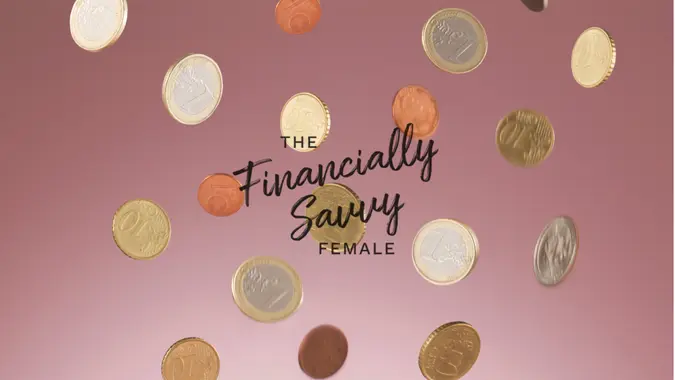Grew Up Struggling With Money? 5 Ways To Break the Cycle With Your Kids

Commitment to Our Readers
GOBankingRates' editorial team is committed to bringing you unbiased reviews and information. We use data-driven methodologies to evaluate financial products and services - our reviews and ratings are not influenced by advertisers. You can read more about our editorial guidelines and our products and services review methodology.

20 Years
Helping You Live Richer

Reviewed
by Experts

Trusted by
Millions of Readers
It’s often said that the most important thing we can give our children is love. Once that need is met, a few others flood to the top of the list. Safety, support and a sense of belonging are up there. Stability — particularly financial stability — belongs there, too. Research shows it plays a significant role in helping children succeed.
But what if you didn’t grow up with financial stability and, as such, never got to experience a healthy example of it? Or what if you still live in financial instability, stuck in a vicious cycle and worried about how it might impact your kids? How do you break the pattern and give your kids the security they need to thrive?
1. Recognize the Signs of Financial Instability
First things first: We need to understand what financial stability really is. As Michael Martino, executive vice president and head of CSBB Diverse Customer Segments at Wells Fargo, explains, it doesn’t just mean living below the poverty line. Even folks with steady incomes can experience financial instability if they lack savings, rely on high-cost financial services or struggle with debt.
“This can manifest in various ways, such as living paycheck to paycheck with little to no emergency savings, depending on payday loans or check-cashing services instead of a traditional bank account, or carrying high-interest debt without a clear repayment plan,” Martino said.
People with little or no credit history often struggle to qualify for loans or rent housing. Unpredictable income, such as gig work or inconsistent hours, can also make it harder to stick to a budget or build savings. “These challenges can create significant barriers to long-term financial security, leaving people vulnerable to unexpected expenses, job loss or economic downturns,” Martino said.
Financial instability often gets passed down from one generation to the next. The cycle often looks like this:
- Lack of banking access. “Without a traditional bank account, individuals turn to expensive alternatives, losing money on fees instead of saving or investing,” Martino said.
- High debt and poor credit. “Narrow financial knowledge can lead to accumulating debt with high interest rates, making it difficult to qualify for affordable loans,” Martino said.
- Limited financial literacy. “With a lack of understanding on how to properly budget, save or invest, people struggle to make informed financial decisions,” Martino said.
- Generational impact. “Without existing savings or assets, parents may be unable to provide financial support for their children’s education, homeownership or emergencies — continuing the cycle,” Martino said.
In short, financial instability is both a barrier to building wealth and a drain on existing wealth.
“Over a lifetime, reliance on costly financial services can drain wealth, potentially costing individuals an estimated $40,000, and causing a potential loss of $360,000 in lifetime generational wealth,” Martino said.
2. Don’t Avoid the Problem — Face It With Intention
If you were raised in a financially unstable household, you may be at higher risk of continuing the cycle simply because of the way your mind has been trained to deal — or not deal — with money management. You may become avoidant.
“The truth is that for these individuals, breaking this vicious cycle of financial instability is harder, because they have been learning and practicing these unhealthy money habits and cultivating these mindsets since their childhood,” said Aaron Razon, personal finance expert at Couponsnake. “However, to find an effective solution, they would have to tackle the root cause of their financial instability — the emotional and psychological factors. Then they can become intentional about developing a healthy relationship with money.”
3. Open a Checking and Savings Account
A simple step to empower future generations and break the cycle of financial instability? Opening a bank account.
“A bank account is a crucial first step to achieving financial stability and breaking the cycle of financial insecurity,” Martino said. “A checking and savings account provides a safe and secure place to manage money, build savings and establish a financial history that can open doors to credit opportunities.”
If your child is old enough, consider opening a youth or teen checking account to help them develop money skills early.
4. Monitor and Improve Your Credit Score
Your credit score plays a huge role in your financial health. It can impact your ability to rent an apartment, get a loan or qualify for lower interest rates, so it’s critical to monitor and improve it.
“A strong credit score can lower borrowing costs, increase access to financial opportunities, and make it easier to secure housing or loans,” Martino said. “Regularly checking your credit report for errors, making on-time payments and keeping credit utilization low are simple yet effective ways to build and maintain good credit.”
Even small efforts, like setting up autopay or paying down your smallest credit card balance, can move you in the right direction.
5. Set and Review Financial Goals
Setting financial goals is crucial to breaking the cycle of financial instability — not just for you, but for your kids. Set goals to build an emergency fund, pay down debt, create a monthly budget or save for a down payment on a home — or even all of the above.
“Making small but impactful changes, such as budgeting or cutting unnecessary expenses, can lead to significant savings over time,” Martino said.
If your kids are old enough to understand, this could be a great opportunity to bring them on board. Let them in on the goals you’ve set and what you’re doing to achieve them. Together, explore what financial stability means for you and your family — and why it matters.
 Written by
Written by  Edited by
Edited by 

























